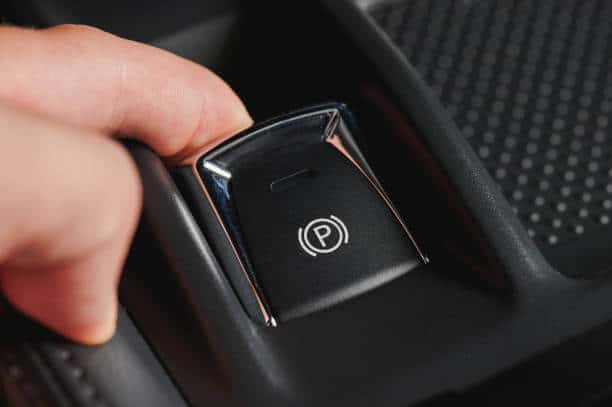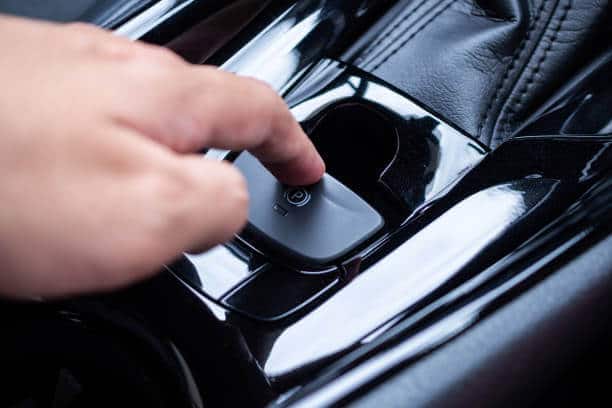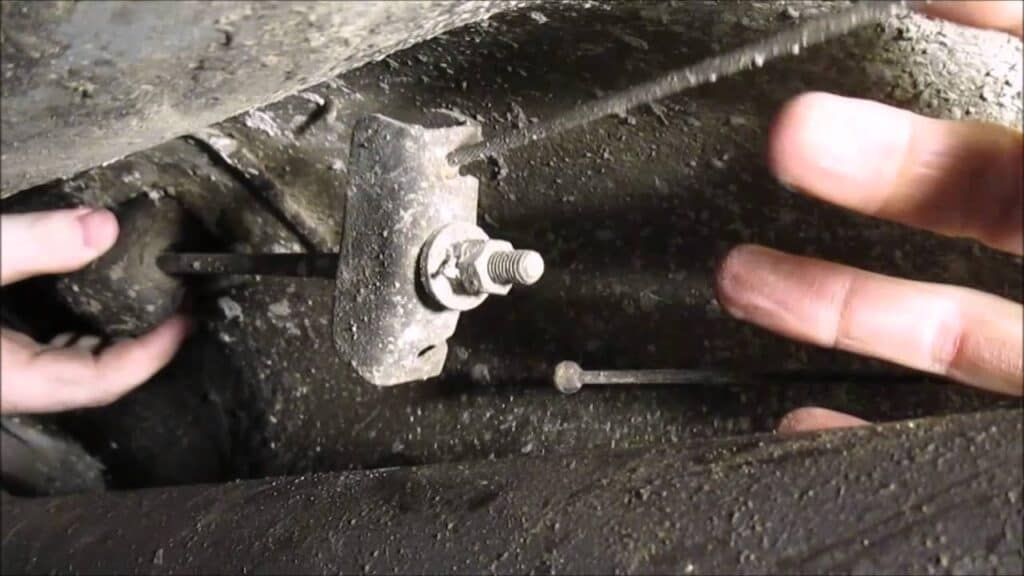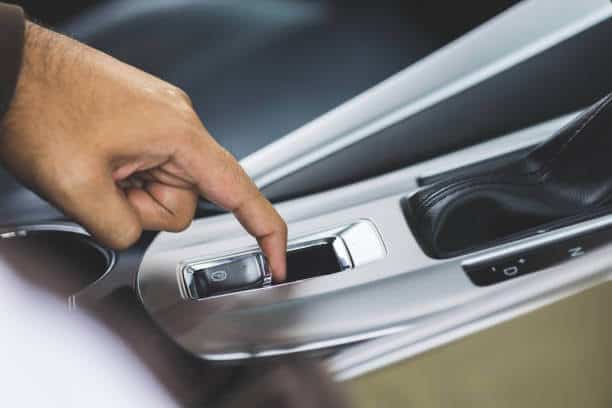A parking brake was initially invented to prevent the car from moving when it is still parked. In most cars, the parking brake must be activated once you have parked your car, or else it will keep moving away. Turning off the ignition prevents the car from going anywhere.
Some vehicles have an automatic parking brake which must be set at first and once you park your car, the parking brake is automatically engaged. The parking brake has a cable that connects the two wheels and it differs from one car to another depending on the manufacturer. Most of the vehicles have parking breaks at the rear of the wheels, while others have the parking brake at the front wheels.
Therefore, you must understand which wheels contain the parking breaks. Modern vehicles such as Subaru and Land Lovers have electronic parking brakes that automatically pull the parking brake cable once the car has been parked.
Parking brakes types

Parking brakes are of four different types, which include stick lever. The stick lever is usually found on old vehicles. The stick lever is set by pulling it between the seats of the passengers and the driver. It is then deactivated by pushing the button located at the end of the lever deactivating the parking brake and pressing it back to normal.
Secondly, the center lever type is positioned between the front seats. It is pushed down when activating it. Disengaging it requires further down-pushing. It is commonly found in modern vehicles. A click is heard after pushing it down when clearing it.
The pedal parking brake is another type that is found on the floor to the left of other pedals. The electric button is positioned at the solace of other controls. It is engaged by pressing the button and also disengaging it requires you to press the button again.
When should the parking brake be used?

The parking brake should be used frequently to keep it working correctly. Failure to use the parking brakes often can make the brakes collide and fail to function when needed. Therefore, when you use the brakes, you provide your car with additional security.
Moreover, your parking brake can also act as an emergency brake if all the brakes fail to function by slowing the car until it stops. If the parking brakes fail, check the parking cables and adjust them.
Adjusting a parking brake cable

Step 1: Find the position of your parking cable adjuster
To adjust your parking brake cable, you must have all the necessary equipment required. For instance, the screwdriver, manufacturer’s manual socket and ratchet set and interior plastic pry tool.
Step 2: Look at the parking brake cables
Remove the parking cables from the joining point. Take a record of the clicks the parking brake needs to tighten. Analyze the number of clicks found to those of the manufacturer’s manual book.
Step 2: Find the position of the parking brake lever boot
The boots contain the operations of the parking brake system. Use the plastic pry tool and snoop around the edges of the boot. Lift the boot until you find the adjustment bolts and remove the parking brake lever boot. Remove any part around that can hinder you from removing the parking brake lever boot.
Step 4: Modify the parking brake cables
Adjust the adjustment bolt and screw the bolt firmly by few turns and then look at the parking cable for any damages. Screw further until proper tightness is gained.
Step 5: Reinstall the parking brake lever back to its position
Once you have adjusted the parking cable correctly, return the parking cable to its initial location. Return any other car parts that were removed.
Step 6: Test the parking brake system if it is working correctly
Check and test the parking brakes by integrating the parking brake. Further, try pushing the car slowly to see if the parking brakes are working. If they fail to function, redo the process above. Once it again fails to function, consult a licensed mechanic or a technician for any assistance.
How to test a parking brake

Step 1: Drive your vehicle over a hilly road
The hill should allow your car to roll and can be able to test your parking brakes.
Step 2: Drive the car slowly past the hill
Roll your car gently over that hill road and if it fails to roll, push it gently until it rolls down that road.
Step 3: Get the parking brake and pull it
Once your car has rolled down the hill, activate the parking brake making your car stop abruptly. If the parking brake fails to function, immediately use the foot brake and step on it.
Step 4: Redo the process but in the other direction
Repeat the same processes over and over again. The results in both directions should be the same if the parking brake does not function as required by stopping the car; consider checking it if it is correctly arranged.
Step 5: Visit a licensed mechanic
When done testing the parking brake yourself, visit a licensed mechanic or technician to check your parking brake system and your car for any incorrect workings.
How many clicks does a parking brake have?

Your parking brake contains 3 to 8 clicks. There are 4 to 5 clicks that stop the car from rolling back. 2 clicks are too few for the parking brake system and more than eight are also too many for the system depending on manufactures. In addition to that, four to eight clicks should handle the parking brake no matter how hilly the place is.
You might be interested to know: How Many Should Handbrakes Have?
Frequently asked questions:
- When does one need to replace the adjustment parking brake cables?
After several attempts to adjust the parking brake cables, you should consider replacing the cables under such situations. The situations, for instance, include: the parking brake cable is damaged beyond any repair if the parking brake pads are torn completely.
In addition to that, when the original installation was completely wrong, you should consider replacing the parking brake cables. Replacing parking brake cables allows your parking brake system to perform correctly.
- How do you check if your parking brake requires any changes?
You can check your parking brake adjustments by going to a steep place and drive your vehicle up the steep road or down. Try applying the parking brake to see if it works properly. If your car responds appropriately by slowing down and then stopping, your parking brake is working perfectly fine, but if it fails to stop, then your parking brake requires some adjustments.
Conclusion
Besides using the parking brake in vehicles, it can also be used in bicycles, motorbikes and even airplanes. It is best for the drivers to understand how to use, control and manage the parking pedals to avoid damaging the vehicles, especially during emergencies.
Moreover, from this article, you have known the parking system, the types, how you can test your parking brake system, and how to adjust the parking brake cables. When you have encountered an emergency where the braking system has failed, use the above information to operate the parking brake system. The steps on how to test your parking brake are simple for both regular users and professionals.
